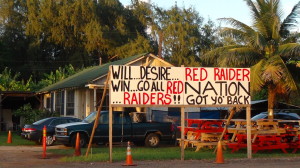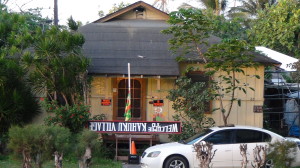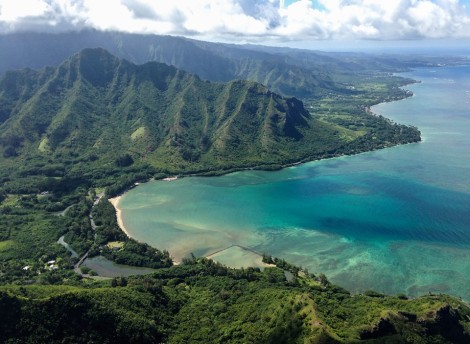
Rail’s Transit-Oriented Development (TOD) An Assault on Private Property Rights
By Choon James 11/03/2012 Published in Civil Beat.
How would you react if a stranger enters your home; goes into your bedroom and sleeps in your bed — without your permission?
The natural reaction would be one of disbelief and outright objection, right?
We would consider this intrusion an invasion of our privacy and space. We would dial 911 to get the intruder off our property.
Yet, we see no similar reactions towards the Honolulu city’s proposed Transit-oriented developments (TOD); we detect no deference to or respect for private property rights. The city’s planners and facilitators have successfully drowned this constitutional right in their public presentations.
On the other hand, the amount of giddy excitement and coveting of private properties (that the government does not own) for this Honolulu Rail’s Transit-oriented development (TOD) is very alarming. http://www.youtube.com/watch?feature=player_embedded&v=sLSzpi0ytSY
We live in a Democracy; we are not China or Russia.
Private property rights is an integral part of free enterprise. We must not allow crony capitalism to stomp private property owners. Government and its cronies must not be allowed to plan as they unilaterally please. http://www.youtube.com/watch?v=SmM4ZBoppNQ
At each of the proposed 21 rail stations, the city wants TODs “within half a mile radius” vicinity. The proposed rail stations are located at every mile; this means the whole land area along the entire 21-mile rail corridor is up for grabs. “Half a mile radius” sounds so harmless!
To covet and seize an additional 20 square miles area along this rail corridor on our small island pose a huge economical, social and cultural impact!
It’s not as if private owners can easily relocate down the road. Family inheritances, investments, and businesses built with sweat, equity, and sacrifices will be placed under the mercy of absolute powers of eminent domain. Kama’aina owners and businesses will be pushed out to pave the way for national and international investors. http://www.youtube.com/watch?v=i67hIaAe6hs
Have we forgotten about Kelo vs. New London, the most despised eminent domain case in recent history http://en.wikipedia.org/wiki/Kelo_v._City_of_New_London The Fort Trumbull community had 117 private properties. The City of New London supposedly had carefully crafted a revitalization plan to spur new jobs and increase tax revenue.
To push this “revitalization” plan forward, New London City abused its eminent domain powers to seize private properties to transfer to its private partner. http://www.youtube.com/watch?v=4N1svadJQ40
As it turned out, the city’s private partner – Pfizer corporation – failed to deliver needed funds and abandoned the much-heralded project. The Pfizer corporation also left town.
The city and state spent $78 Million for the acquisition and bulldozing the Fort Trumbull neighborhood. The promised 3,169 new jobs and $1.2 million a year in tax revenues evaporated.
The municipal experts’ Revitalization Plan, the basis for the ill Supreme Court’s June 23, 2005 decision in deference to legislators, proved to be an elusive concept and not reality.
In early 2012, its newly-elected Mayor of New London extended an apology to the Fort Trumbull victims . . . what good did that do?
The priceless toll on the victims could never be compensated; lives were uprooted and constitution rights subverted while the bureaucratic and political perpetrators walked away scot-free. http://caselaw.lp.findlaw.com/scripts/getcase.pl?court=us&vol=000&invol=04-108
Here in Hawaii, we observe a similar “revitalization” process has been set in motion. City “experts” are holding “Community Visioning” meetings to discuss “Neighborhood TOD Planning”. http://www.youtube.com/watch?feature=player_embedded&v=sLSzpi0ytSY
The city wants to “take advantage of rail to its optimal level” and to “concentrate population” along this rail corridor.
http://dev.honoluludpp.org/Planning/NeighborhoodTODPlans.aspx
The “experts” presented beautiful artistic renderings at these meetings but we’ve yet to hear the sounds of the Rail along the Honolulu High-Capacity Transit Corridor. Who will live along the noisy railroad tracks? http://youtu.be/abzMGHe3Pc0
(The push to steer the low income population along the noisy rail corridor is “segregation déjà vu” and not social equity.)
The dangerous potential for the city to seize 21 square miles of private properties for transfer to private investors has to be reckoned with, today. The proposed Honolulu Rail is not only ugly, noisy, and a black hole for Oahu’s taxpayers; its accompanied TOD is a direct assault on private property rights. http://www.youtube.com/watch?v=V4ezw1Hbf6Y
No Oahu residents should sit idly by and condone such autocratic land-use plans for our island home. It is wrong. It’s dangerous. It’s unAmerican. It goes against the core tenets of our free society.
City planning and developments must conform within the constitutional parameters of private property rights. This should have been a big part of the public deliberations. Any “exemption” laws to skirt this right must be rejected. Too many big decisions have been manipulated and controlled by raw crony capitalism and special interests. Private property owners continue to trampled on and pushed aside by the big boys.
We must take our government back.
&&&
About the author: Choon James has been a real estate broker for over 20 years. She is a member of the Ko’olauloa Sustainable Communities Planning Committee and hosts “Country Talk Story”, a weekly community television show on Saturdays at 5:00 pm on Channel 55. Continue reading →








